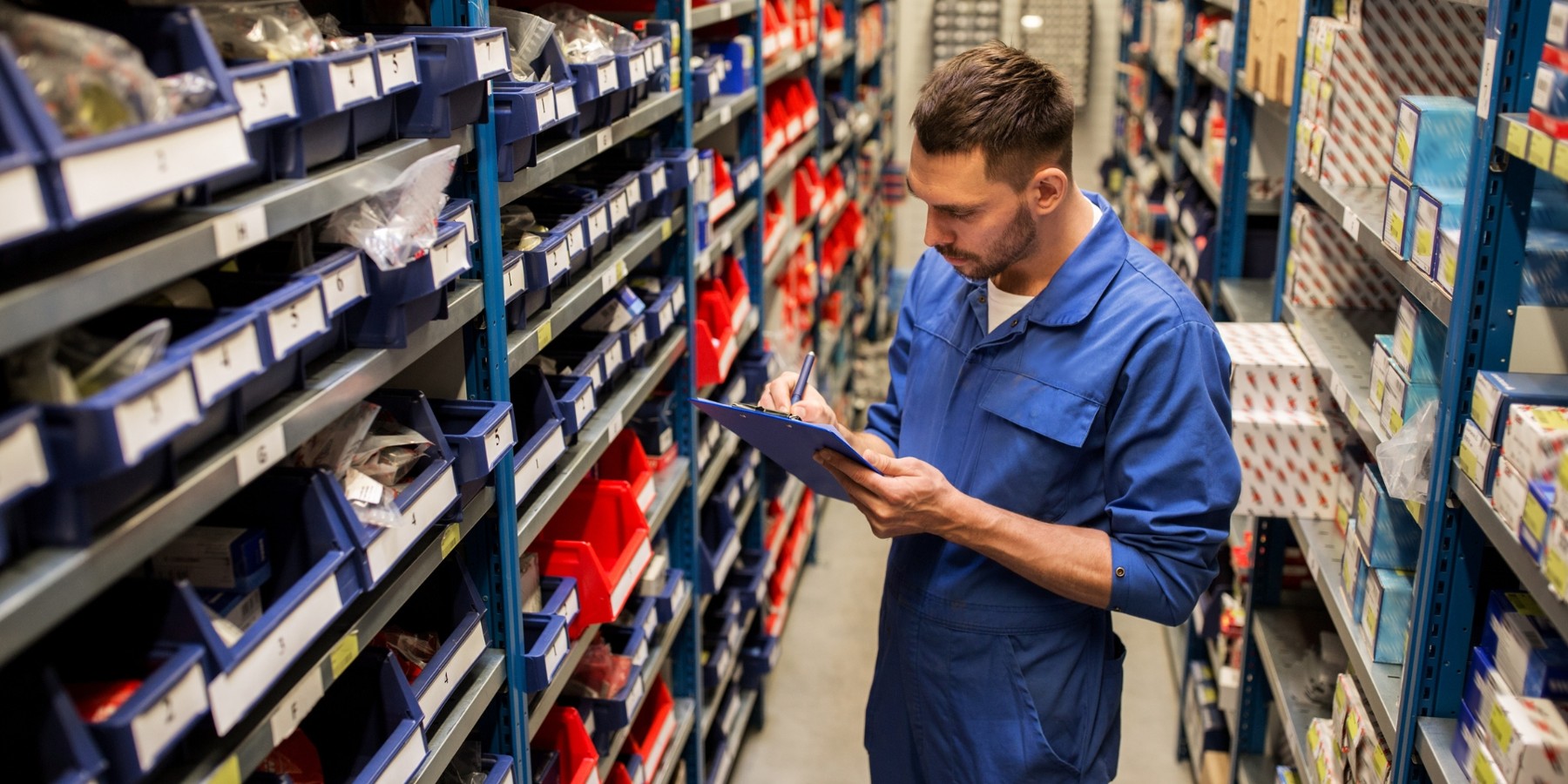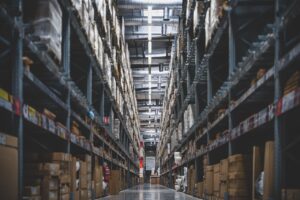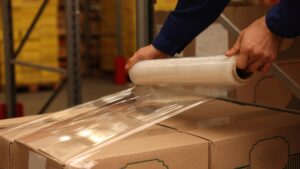Is it still running?
Automobiles comprise thousands of components, manufactured in various parts of the world. Consequently, the industry relies on complex supply chains, where logistics plays a crucial role in ensuring timely and reliable deliveries. Additionally, the sector has experienced significant fluctuations in recent years due to global challenges such as the COVID-19 pandemic and the war in Ukraine.
Optimising packaging costs: How to approach this effectively?
Below, we present the challenges faced by management in the automotive industry and proposed packaging solutions.
Component quality and damage minimisation
In the automotive industry, even minor damage to components can lead to serious consequences, resulting in defective final products or production delays. Therefore, high-quality packaging is crucial to protect parts from various threats:
-
Protection Against Shocks and Vibrations
Automotive components are often transported over long distances, which increases the risk of mechanical damage during transit. The use of shock-absorbing materials, such as polyethylene foams or anti-vibration systems, can effectively minimise this risk.
-
Protection Against Adverse Weather Conditions
Many components, such as electronics, must be protected from moisture or extreme temperatures, requiring specialised hermetic, anti-static, or protective-layered packaging. One material proposed by our team is anti-static bubble wrap.
According to McKinsey research, damage to goods in transit can reduce profitability by as much as 15-25% if appropriate packaging solutions are not used.
-
Scale and Diversity of Shipped Parts – From Large Components Like Car Bodies to Small, Precision Electronic Components
To meet the challenges related to the size and characteristics of various parts, the automotive industry employs a modular packaging system. This system can include both standard large-volume packaging and individual packaging for smaller, delicate components. Each type of part requires customised protection systems that ensure both stability during transport and protection against potential damage, for example:
- For structural components, specialised pallets or high-strength metal frames are used to protect against shocks and component shifting. The packaging of large components also considers the need for oversized transport; therefore, these systems are optimised for efficient space utilisation in containers and lorries.
- Electronic components require significantly more advanced protection. For these, anti-static (ESD) packaging, protective foam inserts, and condition monitoring systems are used to protect against electrostatic discharge, moisture, and vibrations. Such parts are often packed in smaller collective units, which are then placed in larger, durable bulk packaging.
How to safely and economically package individual products?
Electronic Parts and Integrated Circuits
- Anti-static (ESD) packaging protects against electrostatic discharges that could damage delicate integrated circuits, such as anti-static bubble wrap.
- Foam cushioning inserts for protection against shocks and vibrations.
- Vacuum bags – hermetic packaging providing insulation from dust and moisture.
Automotive glass – windscreens, side and rear windows
- Foam or rubber frames protect the edges of the glass, minimising the risk of mechanical damage.
- Cardboard covers and protective layers placed on the glass surface to prevent scratches.
- Stretch films and boxes with inserts packed in cartons with cushioning inserts that hold the glass in place.
Exhaust Systems
- Plastic packaging customised to the irregular shapes of exhaust systems, which minimises empty space within the packaging.
- Bubble wrap and polyethylene foam used as cushioning to prevent damage during transport.
- For large or specialised exhaust systems, metal stands are used to stabilise the component.

Headlight assemblies and LED lighting
- Anti-static (ESD) packaging to protect against damage caused by electrostatic discharges.
- Cushioning inserts made from polyethylene foam and bubble wrap provide protection against shocks and vibrations.
- Hermetic packaging with desiccant bags is used to prevent moisture damage, employing air dehumidifier inserts.
Wheels and tyres
- Tyre covers – typically made from durable film or fabric, protecting the tyre from damage and dirt.
- Specialised wheel pallets allow for stable and compact stacking of wheels one on top of another.
- Securing straps – used to bundle sets of tyres, which facilitates their handling.
Brake systems (discs and calipers)
- Pallets and reinforced cartons to ensure stability for heavy components that can easily sustain mechanical damage.
- Bubble wrap and protective foams are used for cushioning, particularly when transporting brake discs.
- Corrosion protection – anti-corrosion coatings or papers within the packaging, safeguarding components against rust.
Repair kits and spare parts
- Cardboard boxes with individual compartments allow for the separation of small parts, such as screws or gaskets, which facilitates organisation.
- Stretch film and plastic inserts – used to secure smaller components and keep them organised.
- Reusable packaging – for internal deliveries or to production lines, repair kits are often packed in durable plastic boxes.
Operational safety and employee protection
Managing packaging in the automotive industry isn’t just about protecting goods; it’s also about improving safety in logistics operations. Properly designed packaging can reduce the risk of injuries to warehouse employees by eliminating unergonomic handling and unsuitable packaging solutions.
-
Standardised Packaging Sizes
Modular packaging with standardised dimensions reduces the risk of workplace accidents, as these are easier to handle and stack. This also allows for optimising space in warehouses and on production lines.
-
Markings and Identification Systems
Appropriate packaging markings (e.g., QR codes, RFID) not only increase process efficiency but also enable faster identification of hazardous goods, contributing to improved safety in transport and storage.
A report published by OSHA (Occupational Safety and Health Administration) indicates that approximately 25% of workplace accidents in the manufacturing industry are caused by inadequate packaging and storage solutions.
Delivery eficiency and cost optimisation
Delivery efficiency is one of the key challenges in the automotive industry. Optimal packaging significantly impacts transport and storage costs, as well as the speed of component delivery to factories. Increased efficiency can be achieved through:
-
Packaging Consolidation
By standardising and consolidating smaller components into larger, modular packaging, cargo space in lorries or containers can be maximised, reducing the number of transports required. Reducing empty space in packaging can cut logistics costs by 10-20%.
-
Reusable Packaging
The automotive industry is increasingly adopting **returnable packaging**, which reduces costs associated with waste disposal and the repurchase of packaging materials. A study conducted by Automotive Logistics showed that automotive companies that implemented reusable packaging reduced their packaging costs by 30% over a 5-year period.
-
Automated Packaging Systems
Modern technologies, such as packaging robots, not only accelerate the entire process but also eliminate human error, which helps maintain supply continuity in the demanding Just-in-Time (JIT) mode. The implementation of packaging automation can increase efficiency by 20-30%, according to data collected by the Institute for Supply Chain Management.
Packaging and sustainable development
Currently, an ecological approach to logistics is gaining increasing importance within the automotive industry. The use of reusable packaging, biodegradable materials, and the optimisation of waste quantities have become standard practice for many companies.
The use of environmentally friendly materials, such as recycled cardboard, biological composites, or recovered plastics, not only reduces a company’s carbon footprint but also leads to waste-related savings. For example, General Motors implemented packaging made from 100% recycled plastics, which allowed the company to save approximately USD 10 million annually.
Environmental Requirements and European Union Regulations
European Union directives impose specific obligations on automotive manufacturers related to waste minimisation and the responsible use of materials. Key regulations include:
-
Directive 94/62/EC – on packaging and packaging waste
This requires the reduction of packaging quantity and weight and promotes recyclable materials. These regulations encourage manufacturers to use lighter and more ecological packaging, as well as to adopt reusable materials.
-
Directive 2008/98/EC – Waste Framework Directive
This mandates the application of the 3R principle (Reduce, Reuse, Recycle), which is particularly crucial in the production and packaging of automotive components. As a sector with a high volume of transport and logistics, the automotive industry is obliged to maximise the reduction of packaging waste generation.
-
REACH Regulation (Registration, Evaluation, Authorisation, and Restriction of Chemicals)
This prohibits the use of certain harmful chemical substances in packaging materials, which affects the choice of raw materials used in packaging. In response to these regulations, manufacturers in the automotive industry must design packaging that meets both ecological standards and protective needs.


Possible solutions:
Using eco-friendly materials in packaging
To meet ecological requirements, manufacturers are introducing packaging made from recycled and biodegradable materials. Typical materials used in eco-friendly packaging include:
-
This is used in packaging for smaller components, such as electronics, lighting elements, and small mechanical parts. Due to its high availability, recycled cardboard is economical and easy to dispose of.
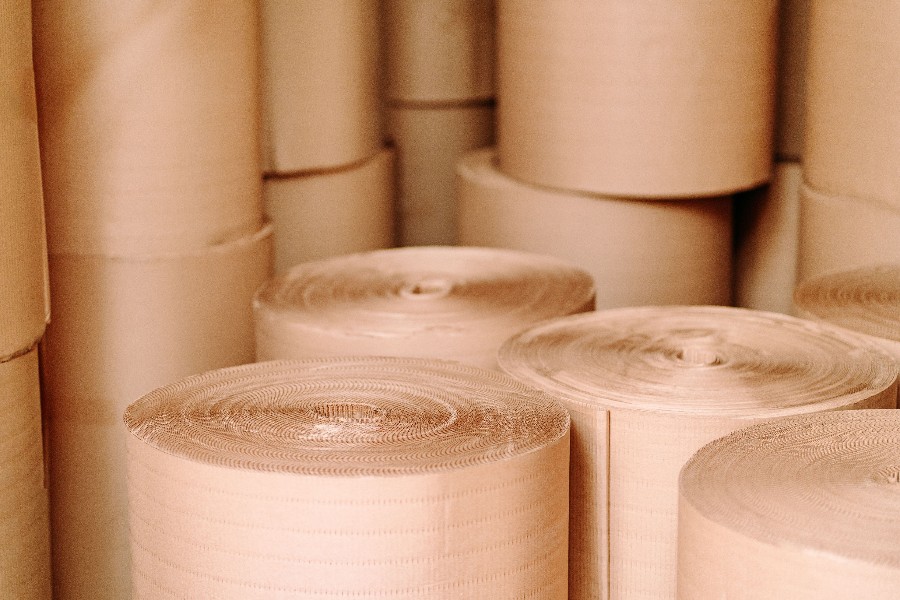
-
Foams, bubble wraps, or recycled inserts are increasingly used as fillers in areas where traditional materials, such as plastic, were previously standard.

-
The use of biodegradable or compostable films instead of traditional plastic films reduces the amount of plastic packaging waste. Biodegradable films are used for packaging components that need protection from dust or moisture but do not require long-term preservation.
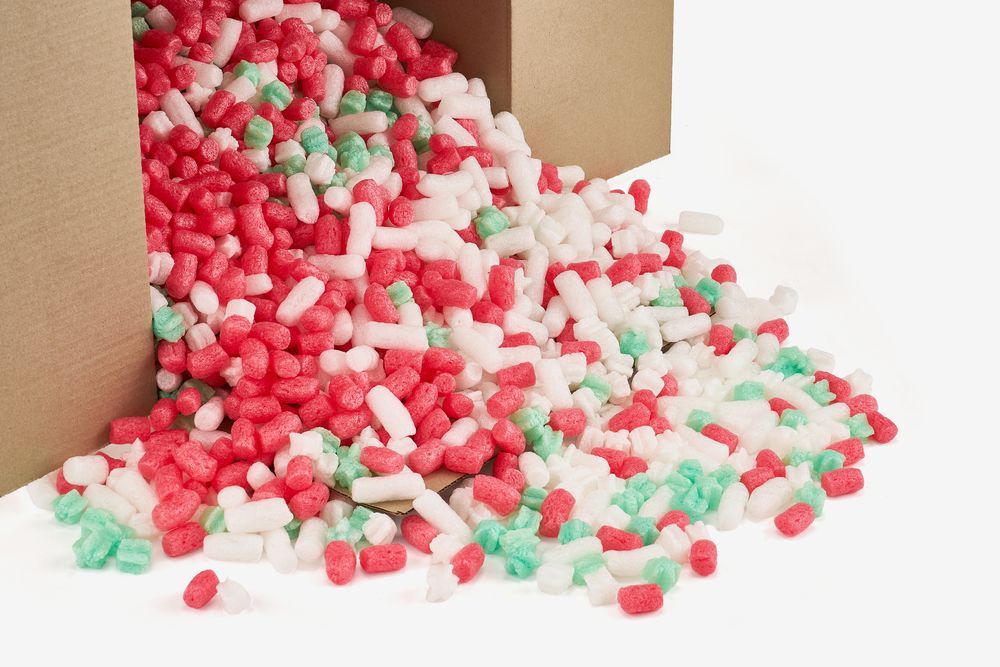
-
Biodegradable Plastics
The use of biodegradable or compostable films instead of traditional plastic films reduces the volume of plastic packaging waste. Biodegradable films are used for packaging components that require protection from dust or moisture but do not need long-term preservation.
Optimising packaging for logistics efficiency and CO₂ emissions
The drive to minimise the carbon footprint is prompting manufacturers to optimise packaging to efficiently utilise transport space and reduce the number of journeys required:
-
Reduction of packaging volume and weight
Thanks to innovations such as modular packaging tailored to component shapes, empty space can be reduced and shipment weight minimised. This leads to lower transport costs and reduced CO₂ emissions.
-
Consolidation of deliveries
To minimise the number of transports, manufacturers use packaging that allows for easier grouping of small components into one large bulk package, which reduces the number of journeys and their environmental impact.
-
Reusable Packaging
In line with EU directives, the introduction of reusable packaging is a key method for waste reduction. The automotive industry uses returnable packaging, which can be reused multiple times in the cycle between suppliers and factories.
Returnable containers and plastic pallets - instead of single-use cartons or crates, durable plastic containers are used that can be utilised repeatedly. This helps reduce costs and waste while also increasing part protection during transport.
Returnable packaging management systems - companies are implementing systems to monitor returnable packaging (e.g., using RFID). This allows for controlling the flow of packaging and minimising losses and damage.
Automotive packaging is far more than simply protecting products during transit. It directly impacts the quality of delivered components, the safety of both employees and goods, and the efficiency of the entire supply chain. Appropriate investments in innovative packaging solutions can bring automotive companies not only cost savings but also enhance their environmental image and competitive advantage.
Naszymi klientami są między innymi:
- Automotive paint shops
- Automotive component manufacturers
- Automotive parts distributors
We can help you and optimize the packaging process in your company
Make an appointment with our advisor

Specializing in the sales of PE foam and bubble wrap, he effectively addresses the needs of clients in the packaging industry. With years of experience, deep market knowledge, and strong negotiation skills, he creates tailored offers and builds long-term business relationships. Outside of work, he’s passionate about basketball — a sport that has taught him the value of teamwork and consistency in achieving goals.

